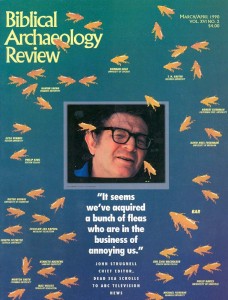Ekron of the Philistines, Part II: Olive-Oil Suppliers to the World

In “Ekron of the Philistines,” BAR 16:01, Trude Dothan and Seymour Gitin introduced us to the rich history of ancient Ekron (modern-day Tel Miqne)—the Philistine city described in Joshua 13:2–3 as part of “the land that yet remains” to be taken by the Israelites. The city, one of the largest Iron Age sites in Israel, lay at a strategic point on the western edge of the Inner Coastal Plain—on the frontier between Philistia and Judah.
Dothan guided us through the early history of Ekron, from the Late Bronze Age (15th–14th centuries B.C.E.) to the end of Iron Age I (about 1000 B.C.E.). She described the various nations who lived in Ekron in those centuries: First, the local Canaanites, then one of the Sea Peoples (who had migrated from the Aegean) whom we know as the Philistines.
Now Seymour Gitin takes up the tale and unfolds the ever-changing drama of Ekron from the beginning to the end of Iron Age II (about 1000 to 600 B.C.E.). These centuries saw Ekron shrink to a mere fifth of its former size, only to re-emerge as perhaps the greatest olive-oil production center in the ancient Near East. But we’re getting ahead of ourselves. Let’s allow Gitin to pick up the narration …
Already a library member? Log in here.
Institution user? Log in with your IP address.

